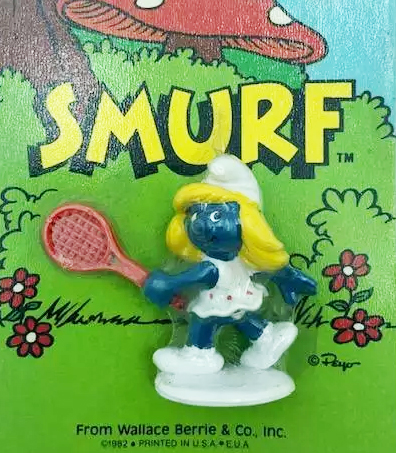If you grew up in the 1980s, you almost certainly met the Smurfs—tiny blue villagers led by Papa Smurf who lived in mushroom houses and outwitted Gargamel and his cat Azrael. What started as Peyo’s European comics became a global craze thanks to a hit cartoon and a tidal wave of hand-painted figurines.
From Comics to Global Fame
The Smurfs debuted in 1958 inside Peyo’s Johan and Peewit before spinning into their own adventures. The strips blended whimsy and gentle morals—an easy bridge to TV and toys as the 80s approached.
The 1980s Animated Series
Hanna-Barbera’s The Smurfs launched in 1981 and ran nine seasons. It leaned into personality archetypes—Brainy, Clumsy, Smurfette—and weekly teamwork lessons, set to an impossibly catchy theme. The show turned existing European popularity into true worldwide recognition.
Smurf Figurines: Pocket-Size Phenomenon
German maker Schleich had been producing Smurf figures since the 1960s, but the 80s sent demand into orbit. About two inches tall and hand-painted, figures covered every hobby, season, and job imaginable—Soccer, Painter, Doctor, Holiday sets, and more. Kids displayed them on shelves, lined them along windowsills, and traded duplicates at school.
Why They Worked
- Character clarity: one pose = one persona; instantly readable even at small scale.
- Endless themes: sports, music, holidays, professions—easy to “collect one more.”
- Durable & displayable: hard to break, easy to stage as a village.
Beyond Figures: Peak Smurf Fever
Licensing exploded—lunchboxes, plush, books, games, even charting singles like “The Smurf Song.” Episodes often nudged toward environmentalism and empathy, making the brand parent-friendly while staying unabashedly fun for kids.
Comics Keep Marching
Peyo’s studio continued publishing after his passing in 1992, expanding Smurf society and lore beyond what the TV runtime could cover. In Europe especially, new albums kept the brand evergreen between screen revivals.
Collector Notes & Care
- ID marks: check bases for Schleich stamp, year, and copyright—helpful for dating variants.
- Paint: hand-painted details vary—look for clean eyes, intact whites, minimal rubs on noses/hats.
- Storage: avoid heat/sun (yellowing/warping); stand figures upright; bag small accessories separately.
- Cleaning: mild soap and a soft brush; avoid solvents that lift paint.
- Sets: holiday or themed waves display best together—document with a quick photo inventory.
Legacy
Between comics, the long-running cartoon, and decades of figurines, the Smurfs shaped a kinder corner of 80s pop culture. Modern reboots and new toy waves keep interest high, but those original hand-painted figures still anchor Smurf collections—and 80s memories.
